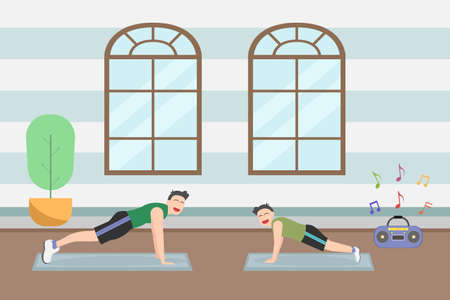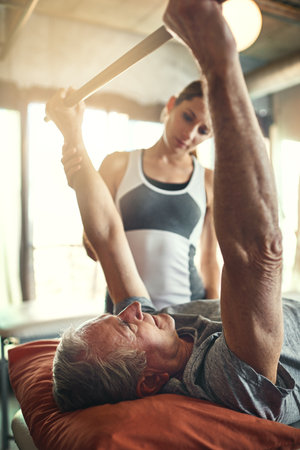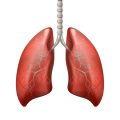Introduction to Hydrotherapy in the UK
Hydrotherapy, or water therapy, has a rich tradition within the United Kingdom, serving as both a historical remedy and a modern approach to musculoskeletal recovery. Over centuries, British sports enthusiasts have turned to natural springs, thermal baths, and purpose-built hydrotherapy pools to soothe injuries and enhance their physical wellbeing. Today, hydrotherapy remains an integral part of rehabilitation for athletes across the UK, blending time-honoured practices with cutting-edge techniques. Whether it’s elite footballers recovering from intense matches or community runners easing muscle tension after local events, hydrotherapy offers a gentle yet effective path to recovery. This trusted modality continues to evolve alongside advancements in sports medicine, underlining its enduring value for those passionate about staying active and resilient in the face of physical challenges.
2. Common Musculoskeletal Challenges Faced by British Athletes
In the vibrant world of British sports, athletes and enthusiasts alike are well-acquainted with the physical demands of their favourite activities. Whether it’s a grassroots football match on a misty Sunday morning, a spirited cricket innings on a village green, or a hard-fought rugby clash under grey autumn skies, UK sports culture thrives on participation and passion. However, these beloved pastimes also bring with them a host of musculoskeletal challenges that can impact both performance and long-term wellbeing.
Prevalent Injuries in Popular UK Sports
Across the country, certain injuries and conditions are repeatedly observed due to the nature of commonly played sports. Footballers often face strains and sprains, especially to the lower limbs, as quick direction changes and tackles place stress on joints and soft tissues. Cricket players frequently contend with repetitive strain injuries, particularly affecting shoulders and elbows from bowling and batting actions. Meanwhile, rugby participants—owing to the full-contact aspect of the sport—are more susceptible to traumatic injuries such as ligament tears and muscle contusions.
Comparison of Common Injuries by Sport
| Sport | Typical Injuries | Affected Areas |
|---|---|---|
| Football | Ankle sprains, hamstring strains, knee ligament injuries | Ankles, knees, thighs |
| Cricket | Rotator cuff injuries, tennis elbow, stress fractures | Shoulders, elbows, lower back |
| Rugby | ACL tears, shoulder dislocations, contusions | Knees, shoulders, head/neck |
The Impact on Recovery and Participation
The prevalence of these injuries not only affects professional athletes but also recreational players who look forward to their weekly fixtures as a key part of their routine. Recovery times can be lengthy without appropriate intervention, potentially leading to frustration or even withdrawal from sport. Understanding these musculoskeletal challenges is essential for tailoring effective recovery strategies—such as hydrotherapy—that can support British sports enthusiasts in staying active and resilient season after season.

3. Hydrotherapy Methods and Facilities in Britain
Hydrotherapy has become increasingly popular among British sports enthusiasts seeking effective musculoskeletal recovery. Across the UK, a variety of hydrotherapy techniques are embraced, each offering unique benefits tailored to different needs and preferences. Common approaches include aquatic exercise, contrast water therapy (alternating between hot and cold water), underwater massage, and flotation therapy. These methods are designed to reduce inflammation, promote circulation, and accelerate healing in a gentle yet supportive environment.
Local Hydrotherapy Facilities
The UK is home to a diverse range of hydrotherapy facilities, from NHS-supported clinics to luxurious private spas and dedicated sports rehabilitation centres. Many hospitals and community health services provide access to hydrotherapy pools as part of their physiotherapy departments, allowing patients to benefit from supervised sessions led by trained professionals. In addition to these public offerings, numerous private clinics cater specifically to athletes and active individuals, providing bespoke programmes that address both acute injuries and long-term musculoskeletal conditions.
Specialised Pools and Spas
Purpose-built hydrotherapy pools are a common feature within rehabilitation centres across Britain. These pools often maintain warmer temperatures than standard swimming pools, enhancing muscle relaxation and joint flexibility. Some facilities also offer adjustable current systems or underwater treadmills for controlled resistance training—a favourite among footballers, rugby players, and runners recovering from injury. For those seeking a more holistic approach, many local spas feature thermal suites with hydro-massage jets, steam rooms, and saunas, creating an environment that nurtures both body and mind during recovery.
NHS vs Private Offerings
Access to hydrotherapy in Britain is available through both the NHS and private healthcare providers. While NHS services are widely respected for their clinical expertise and accessibility, waiting times can sometimes be longer due to high demand. Private facilities often offer quicker access and personalised treatment plans but may come at an additional cost. Regardless of the setting, British hydrotherapy practitioners prioritise evidence-based care with a compassionate touch—ensuring that every athlete receives attentive support on their journey back to strength and well-being.
4. Benefits of Hydrotherapy for Recovery
Hydrotherapy stands out as a valuable tool for musculoskeletal recovery, particularly for British sports enthusiasts who encounter a wide range of physical demands and injuries. Its unique properties can support the healing process, restore mobility, and manage pain in ways that complement traditional rehabilitation methods.
Supporting Musculoskeletal Healing
The buoyancy provided by water reduces gravitational pressure on joints and soft tissues, allowing athletes to perform movements with less discomfort and strain. This environment facilitates gentle exercise earlier in the recovery process, which is essential for maintaining muscle tone and promoting blood circulation—key factors in tissue repair. For example, research conducted by the Chartered Society of Physiotherapy highlights that hydrotherapy can accelerate post-injury recovery timelines for British athletes by enabling controlled, low-impact movement.
Restoration of Mobility
Water’s resistance offers a safe and adjustable way to rebuild strength and flexibility. The warmth of hydrotherapy pools (typically maintained at 32–35°C in UK facilities) encourages muscle relaxation and joint loosening, making it easier to regain range of motion after injuries such as sprains or surgeries common among footballers and runners. British physiotherapists often incorporate water-based exercises to help patients progress from immobilisation to full activity more comfortably than on land.
Pain Management Techniques
Hydrotherapy is also recognised for its analgesic effects. The thermal properties of warm water stimulate sensory nerves, which can dampen pain signals sent to the brain—a phenomenon supported by studies featured in the British Journal of Sports Medicine. In addition, hydrostatic pressure helps reduce swelling around injured areas, leading to further pain relief. The table below summarises these benefits:
| Benefit | How Hydrotherapy Helps | Evidence from UK Practice |
|---|---|---|
| Musculoskeletal Healing | Promotes gentle movement and improved circulation | CSP guidelines recommend early-stage hydrotherapy for acute injuries |
| Mobility Restoration | Increases joint flexibility through buoyancy and warmth | Commonly used in NHS rehab programmes post-surgery |
| Pain Management | Reduces pain via thermal effect and decreased swelling | BJSM studies report reduced pain scores post-session |
A Gentle Approach Suited to All Levels
No matter if you’re a weekend cyclist or an elite rugby player, hydrotherapy adapts to individual needs—making it a trusted resource within British sports medicine circles. Embracing this gentle yet effective therapy can make your journey toward recovery not only quicker but also more comfortable.
5. Practical Considerations and Local Guidance
For British sports enthusiasts eager to incorporate hydrotherapy into their musculoskeletal recovery, understanding how to access these services locally is essential. In the UK, hydrotherapy is commonly available through NHS facilities, private clinics, and some dedicated sports rehabilitation centres. While NHS hydrotherapy typically requires a referral from your GP or physiotherapist, private providers often allow self-referral, offering greater flexibility but at an additional cost.
Accessing Hydrotherapy Services in the UK
If you are experiencing ongoing musculoskeletal discomfort or recovering from a sports-related injury, your first step should be consulting your GP. They can assess whether hydrotherapy is appropriate for your needs and provide a referral if necessary. NHS waiting lists for hydrotherapy can vary by region, so it’s worth checking with your local trust about availability. Alternatively, many private physiotherapy clinics offer tailored hydrotherapy sessions without the need for a referral, which may suit those seeking quicker access or more specialised care.
Typical Costs and Funding Options
The cost of private hydrotherapy in the UK typically ranges from £40 to £80 per session depending on location, duration, and the providers expertise. Some private health insurance policies may cover part or all of the costs—check with your insurer before booking sessions. For those accessing hydrotherapy through the NHS, there is generally no direct charge, though as mentioned, waiting times can be longer.
Considerations for Different Levels of Athletic Activity
Hydrotherapy can benefit athletes at all levels—from casual weekend joggers to competitive club players. For elite or high-performance athletes, working with a physiotherapist experienced in sports rehabilitation ensures that hydrotherapy protocols are aligned with training goals and competition schedules. Amateur and recreational athletes might focus more on general recovery and injury prevention. Always communicate openly with your healthcare provider about your activity level and specific goals to ensure that your hydrotherapy programme meets your unique needs.
Ultimately, integrating hydrotherapy into your recovery routine in the UK requires thoughtful planning and communication with local health professionals. With the right guidance and support, British sports enthusiasts can enjoy the restorative benefits of water-based therapy as part of their long-term wellness journey.
6. Real-life Stories and Expert Perspectives
For many British sports enthusiasts, the journey to recovery is as much about personal experience as it is about professional guidance. Across the UK, athletes and recreational sports lovers alike have found hydrotherapy to be a cornerstone in their musculoskeletal rehabilitation. One such example comes from Sarah, an avid runner from Manchester, who credits regular hydrotherapy sessions at her local leisure centre for helping her manage recurring knee pain. “After months of struggling with traditional physiotherapy alone, being able to move freely in warm water gave me back my confidence and reduced my discomfort immensely,” she shares.
Voices from the Field
It’s not just athletes who are singing the praises of hydrotherapy. British physiotherapists have also observed significant improvements in their clients’ recovery journeys. Mark Thompson, a senior physiotherapist based in Birmingham, notes, “Hydrotherapy offers a unique environment where we can safely introduce movement earlier after injury. Clients often report less pain and greater mobility after just a few sessions.” He adds that the sense of camaraderie in group hydrotherapy classes often boosts motivation—a particularly British approach that values community spirit.
A Growing Community
In recent years, more local football clubs and cycling groups across England, Scotland, and Wales have integrated hydrotherapy into their training and recovery routines. Testimonials abound on club forums and social media: from rugby players in Bath managing post-match muscle soreness to hill walkers in the Lake District speeding up their return to the trails after strains or sprains. These shared experiences foster a supportive network where advice and encouragement flow as freely as the water itself.
The Takeaway from Experts
Both athletes and experts agree—hydrotherapy is not merely a supplementary treatment but a pivotal part of holistic musculoskeletal care. As more research emerges and facilities become increasingly accessible throughout the UK, hydrotherapy continues to prove its value in restoring function, building resilience, and enhancing overall wellbeing for Britain’s active community.


